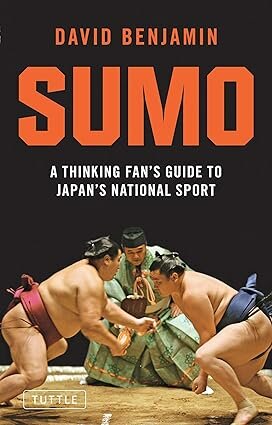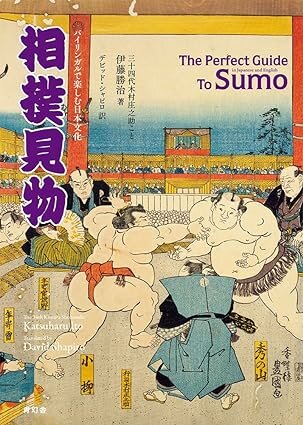The US Sumo Open
Celebrating 24 years of slamming behemoths
If you never heard of the US Sumo Open, then you’re not alone.
This Spring, the 1,500-year-old Japanese sport, which enjoys a hyper-niche following in the U.S., will celebrate its 24th Open on the campus of Long Beach State University in Long Beach, California.
Founded by West Coast native Andrew Freund, the annual event is the world’s largest and longest running sumo tournament outside Japan.
Standing 6’0 and weighing just 160 lbs., Freund is the unlikely promoter of a sport that features 300-500 lb. wrestlers who are deified in Japan but are largely unknown in the U.S.
A former math major at UC Santa Barbara, Freund ventured into the martial arts craft after returning home from a year of teaching English in Japan.
Landing a teaching spot at UCLA, he stumbled on the idea of setting up a sumo club on campus.
BUY- 'The Way of Salt: Sumo and the Culture of Japan'
Within a few years, Freund was flying in professional wrestlers from Mongolia and Japan to hold exhibition matches in Southern California.
With no experience in business or event management, the budding sports entrepreneur took out a bank loan, ran up his credit cards, and put a lien on his car to get the first sumo tournament rolling in America.
One of his coups was Konishiki, a 600 lb. retired professional from Hawaii who agreed to take part in the inaugural competition.
Fortunately for Freund, he was able to attract a sponsor to cover the cost of Konishiki’s transportation, since the famed wrestler took up 3 seats on the plane and was also accompanied by two of his handlers.
Held at UCLA’s John Wooden Center, the first US Sumo Open took place on August 4th, 2001 with 25 behemoths from 9 different countries doing battle in the ring.
Besides Konishiki, the list of athlete guests included Bulgaria’s Svetoslav Binev, a two-time amateur World Sumo Champion.
Though fewer than 1,000 spectators attended, the novelty of the tournament drew media attention and paved the way for future competitions.
BUY- 'Sumo: A Thinking Fan's Guide to Japan's National sport'
Steeped in history and tradition, sumo wrestling is as rooted in Japan as it is alien in America. And while the rules of the sport are fairly simple, the culture around it is highly complex.
With two competitors facing each other in the middle of a 15-foot diameter ring, the goal is to push the opponent outside the circle, or force him on the ground.
Punching, kicking, gouging, and hair-pulling are not permitted; slapping and tripping are allowed. In the pros, there are no weight categories and 200 lb. athletes have been known to defeat 600 lb. leviathans.
Remarkably, wrestlers train for up to 200 hours a month for just several minutes of competition a year; most wrestlers engage in 42 matches annually, with each match lasting less than 10 seconds.
Sumo has been part of the World Games since 2001, but it has not yet been accepted as an official sport at the Olympics.
Outside the wrestling ring, the pros in Japan lead a single-purpose, hierarchical existence.
Some 600-700 of them live among 40 teams in the same enclave around Tokyo where they follow a strict dietary regimen and practice centuries-old training techniques.
Teams are housed together with little, or no personal life outside their day-to-day rituals.
BUY- 'The Perfect Guide to Sumo'
Young entrants are practically indentured to the top ranked combatants, cooking and cleaning for their masters as they make their way up the sumo pecking order.
ENJOY OUR CONTENT? SIGN UP FOR OUR FREE WEEKLY NEWSLETTER, OR JUST $30/YR WITH ARCHIVES, APP & AUDIO
In the kitchen, ‘chanko-nabe’ is the magic stew that keeps wrestlers in peak strength. Packed with nutrient-dense proteins and vegetables, it’s consumed in a bowl of hot broth after every morning workout.
Contrary to popular belief, most sumo athletes are immensely muscular and elite performers can carry body fat as low as 11% of their weight.
While pro-sumo champions are handsomely rewarded through endorsements and corporate gifts, the sport is heavily subsidized by the government, which sees it as a preservation of Japanese culture.
Few outsiders have reached professional status in Japan and sumo as a competitive sport remains an amateur pursuit beyond the shores of the Nippon islands.
Over the years, the US Sumo Open has attracted an eclectic group of amateur participants from different countries and across all weight categories.
For the 20th anniversary in 2020, 6,000 seats were pre-booked and 90 athletes were set to step into the ring.
As in prior years, Freund had an impressive lineup of lightweights, middleweights, and heavyweights to rouse up a crowd, but Covid-19 upended those plans and the event was postponed.
The most memorable US Sumo Open in the past two decades took place in 2013 when Byamba, a 360 lb. wrestling legend from Mongolia, hoisted his 440 lb. opponent 6 ft in the air and dropped him flat on the ring.
The match got nearly 8 million views on youtube and became known as the ‘sumo slam’.
Byamba won the Open 8 consecutive times from 2007-14 and his overall record was an astounding 110 wins and 7 losses. Sadly, he died from a protracted illness in February, 2020 at the age of 35.
BUY- 'The Book of Samurai: The Fundamental Teaching'
Last year’s Heavyweight and Openweight winner was 2022 defending champion, ‘Mendee’- Mongolia’s 5’10, 310 lb. Mendsaikhan Tsogt-Erdene.
In the women’s division, which Freund also pioneered in the U.S., it was 5’5, 238 lb. Enkhzaya Selenge from Mongolia as well.
Working as an English-speaking color commentator for TV broadcasts of professional sumo matches, Freund has built contacts in the opaque world of Japan’s sumo culture.
Despite his thin stature, he has also competed and won 2 amateur National Championships in his weight division.
While the US Sumo Open has become his labor of love, the entertainment and exhibition side of the business pays the bills.
Between the annual tournaments, Freund produces sumo road shows across the country and around the world, while acting as announcer, referee, and interpreter.
His exhibitions have taken him from casinos in upstate New York to sporting venues in far-flung India.
For his champions, he also books film spots, TV shows, commercials, and corporate and family parties.
Black-tie guests paying $100-$200 at exclusive venues can be wowed at a ‘Sumo Sushi Show’ where they meet, greet, and eat with the stars.
This year’s US Sumo Open is scheduled for May 11th and is expected to showcase 150 back-to-back matches among 60 international wrestlers from 10 different countries.
Looking ahead, Freund hopes to keep the US Sumo Open dynamic, expand amateur participation, and add more venues for his traveling exhibitions.
But most importantly, while exploiting commercial opportunities to increase sumo's popularity, he continues to remain true to an ancient art.
ENJOY OUR CONTENT? SIGN UP FOR OUR FREE WEEKLY NEWSLETTER, OR JUST $30/YR WITH ARCHIVES, APP & AUDIO














